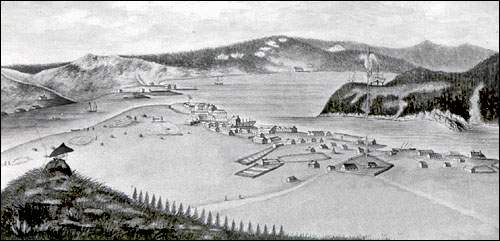Garrison Life in the 18th Century
Page 5
Nevertheless, the military still played an important role, and if its presence was reduced, the community was threatened with decline. This is what happened to Placentia. During the 18th century Placentia dominated the immediate region, and though its fortifications and garrison may have been of dubious quality, in wartime they enhanced the importance of Placentia as a service centre considerably. The renewed effort to fortify and garrison St. John's after 1763 lessened Placentia's military and strategic significance, and its population declined.

The advantages of having a garrison were significant. At a time when there were no institutions or mechanism to deal with poverty and destitution, the garrison could sometimes be relied upon to assist by distributing military rations. This was done in 1784 at St. John's. A few years earlier, in May 1779, a fire destroyed half of St. John's, including vast quantities of provisions. The resulting food shortage left the people desperate, even after the arrival of the spring convoys. The following winter was therefore extremely difficult, with many people so weakened by malnutrition that they succumbed to an epidemic early in 1780. Governor Richard Edwards seized this opportunity to enlist recruits into a volunteer corps to support the garrison. Volunteers were promised a recruitment bounty, regular army rations whenever they mustered for drill, and additional provisions for their families. Edwards also awarded contracts to volunteers to supply firewood or construction material. It was, according to one military historian, "a masterpiece of coercion" (Nicholson, 1964, 15).
In peacetime, the garrison also provided the town with pomp and ceremony. This quality must not be dismissed lightly. The presence of the military helped lend an air of spectacle to an otherwise miserable environment. Military reviews, salutes to observe the arrival of a new governor, or the King's birthday, or the anniversary of his coronation, all added to the sense of pageantry, and contributed in their modest way to an awareness of the empire to which the inhabitants belonged. The military, therefore, reinforced the position of the sovereign, his representative the governor, and even the church in the society that was emerging in Newfoundland. The officers encouraged and participated in leisure activities such as dinner parties, public balls, and on occasion, horse racing. The garrison was therefore developing into an important part of community life, and was recognized as a valuable addition to the local economy and society.
Thus the military presence in Newfoundland before 1815 did more than provide the fishery with protection. The garrisons also played an important role in local economies, and helped stimulate the diversification of the society by bringing out women and children to Newfoundland, as well as domestic servants, skilled labourers, tradesmen and artisans. It provided pomp and ceremony, and added to the quality of social life. In short, the garrisons in Newfoundland had a strong influence on the way in which the local communities in which they were stationed developed during the 18th century.




